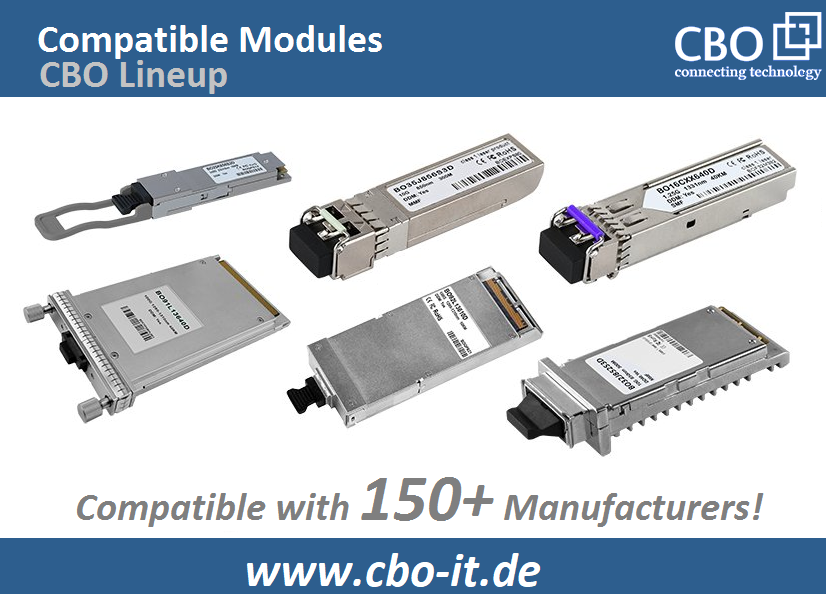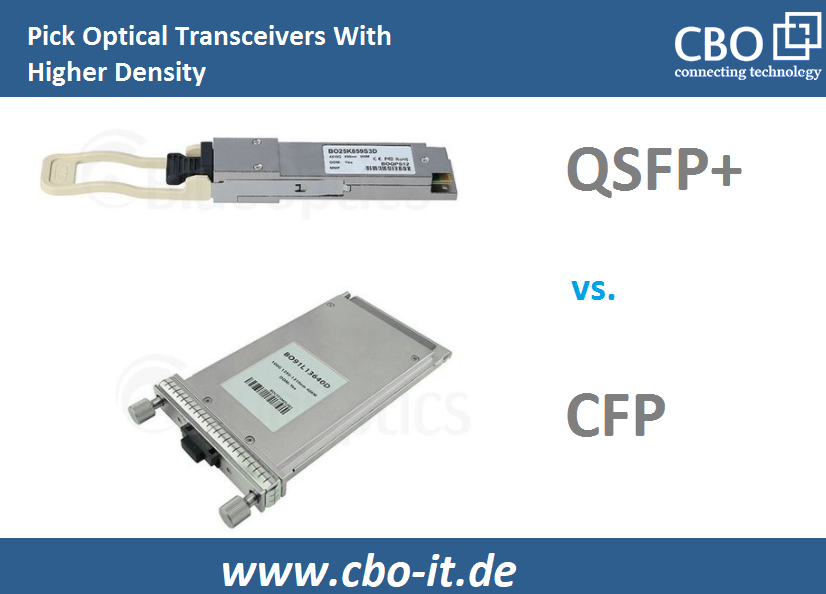It is an obvious thing that optical fiber interconnections cannot be achieved without optical transceivers. In a medium to large scale data center, several hundred to thousands of optical modules are often deployed. Optical modules acquisition price and operating costs account for a big share of data center erection and operating expenditures. Thus, making the right decisions and choosing the correct transceivers at the planning and deployment phase of any data center is very important. The following are a few tips who are considering different optical transceiver options.
TIP#1 - Prefer Compatible Modules
Let us compare compatible modules and OEM modules to understand their differences. OEM modules are sold directly from original equipment manufacturers such as Cisco. However, in most cases OEM modules are also manufactured by third party manufacturers. Later, these modules are branded and marketed to be sold off the platform of major vendors and with higher price tags. On the other hand, compatible modules are widely available at a much lower price. Considering our years of experience, compatible modules are equal in quality to OEM modules. However, you have to keep in mind that there are also differences between the manufacturers of compatible modules. Here the products can vary greatly in quality as well as in price. Therefore, when choosing this lower-cost alternative, you should rely on tested brand products such as BlueOptics and BlueLAN products, which also underline their quality promise with years of warranty. It is not without reason that these modules are preferred over OEM modules in the developing markets today.

TIP#2 - Prefer Low Power Consuming Modules
Energy efficiency is another major concern when it comes to data center operators' costs. It is a fact that the same type of module from different manufacturers has different power consumption values. Fiber optic modules are supplied with integrated optoelectrical devices and require electricity to operate. Manufacturers with better design capabilities and manufacturing technologies can develop more energy efficient modules. On the other hand, similar modules produced by small modules may have higher power consumption.
Here it is important to understand that even a difference of a few watts or milliwatts in the power consumption of two modules of the same type can make a big difference in a broader perspective. Assuming that the power consumption of two 10G modules is 3W and 2.5W respectively, the power consumption of the optical module on a 48G panel can reach 144 watts for the former and 120 watts for the latter. If a network now has 16x of such 48G switchboards, the total value is 2300 watts and 1920 watts. It shows that a significant amount of energy can be saved in medium to large networks by using more efficient optical modules.

TIP#3 - Prefer Higher Density Modules
In data center environments, space utilization and efficient space management remain one of the most challenging tasks for network designers and IT architects. Networking components dissipate heat and that’s why their installation is not that simple. When choosing from different form factor optical transceivers with similar operating rates, the small size ones must be preferred, if possible. In this way, you will be able to save a lot of space and power. As an example, consider CFP and 40G QSFP+ optical modules as both support 40G networking. The length and the width of a 40G QSFP+ measure around 12 x 1.8 centimeters whereas the length and the width of a CFP modules measures around 14 x 8.2 centimeters. In case if we have to install 8 modules then the CFP modules require approximately 918.4 c㎡ area – much larger than the area of 172.8c㎡ required for a similar number of QSFP+ modules. So, you can save a lot of rack-space by choosing the right form factors, especially in high-density data centers.
Conclusion
Dealing with the CAPEX and OPEX related challenges is quite a challenging task for network operators and data center managers. Most managers prefer going with compatible hardware including modules when they have to construct a working and robust network with a limited budget. Organizations that can spend more usually stick with Original hardware. However, choosing the most suitable form-factor optical modules is also important to ensure better space management and optimized operation of the data center.
 English
English
 Deutsch
Deutsch
 Espaniol
Espaniol










